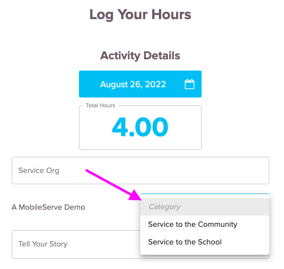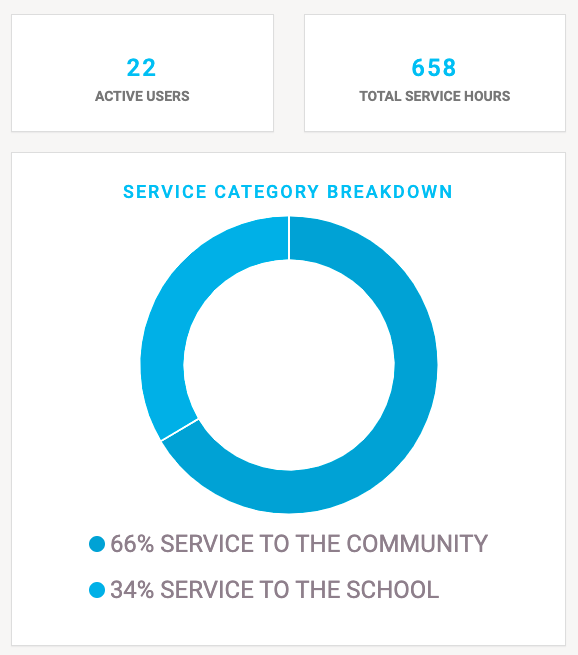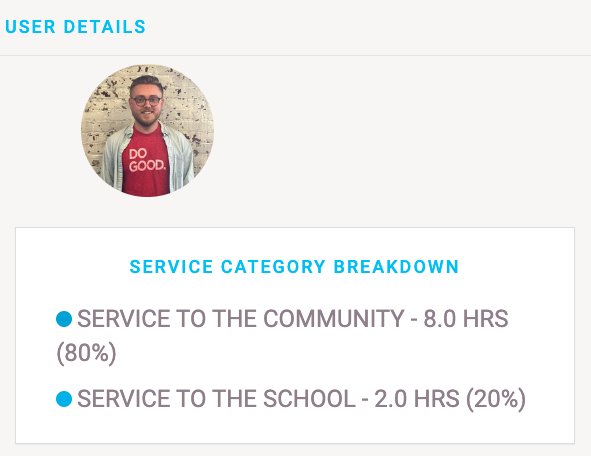Programs seeking specific outcomes often use specific service categories to better understand the impact their volunteers have in the community. For example, many schools require student volunteers complete projects in the community to reach their intended service outcomes. At the same time, many corporate social responsibility programs use cause areas (service categories) to better convey how employees interact with the community when completing impact reporting. Regardless of your intended outcome, service categories are vital to conveying the impact your service program is having on your community and volunteers. MobileServe has analyzed thousands of service categories to help you define your category strategy based on best practices that achieve your intended service outcomes.
What is a Service Category?
Service categories allow volunteers to classify each of their service logs under a standardized set of categories across the entire program. Beyond the basics of service organization, service hours and intentional reflection questions, service categories allow volunteers to convey how their service corresponds with the service outcomes you've indicated.
In the basic example below, the school is using service categories on the MobileServe platform to better understand if their students are completing service on campus or in the community.

The Benefits of Service Categories
Because the details of individual service logs are unique, categories allow administrators to trend how individual experiential learning connects to larger intended outcomes. The basic examples below show how categories empower administrators to better tell the story of the impact of their volunteers while ensuring volunteers meet any required balance in types of service. For example, the individual impact example shows how many schools quickly see if their students meet the requirement of spending at least 50% of their time volunteering off campus.
|
Reporting Impact at the Program Level
|
Reporting Impact at the Individual Level
|
Building Your Service Category Strategy
Service categories are unique to each program but do share some similarities. Let's start with a few examples from different service types:
|
Middle and High School Service Program
|
NonProfit Volunteer Management
|
Corporate Social Responsibility
|
Building off these examples, consider your intended service outcomes and how you will convey the impact of your service program. Common considerations include:
- Is it enough to differentiate between service on campus and off? If so, a simple strategy of "Service to the Community" and "Service to the Program" may be perfect.
- Is there a faith element to your service program? If so, a strategy that breaks out meaningful service to reinforce faith teachings may be right for you.
- What are other programs using?
| Some of the most common service categories in the MobileServe community: | ||
|
|
|
Service Category Best Practices
Once your strategy is identified, best practices based on the thousands of custom service categories in the MobileServe community include defining the structure and limiting the number of categories.
Service categories should be mutually exclusive. When a volunteer is entering service details, they should not have to consider if a service opportunity classifies as this service category or that service category.
The most common number of service categories is six. This is a good benchmark when you consider volunteers are choosing a service category when logging service details. A concise number of options makes choosing the right option easier. If you find yourself struggling to keep your service categories concise, consider how you can use a custom reflection question to gather specific details, allowing you to standardize your categories.
Service categories can be changed! It is important to know that service category strategies are not written in stone. If you decide on a strategy of 7 categories then decide six is a better answer, simply roll up the hours from one service category into the other to aggregate your service data.
We would love to hear from you if your program has an especially innovative or successful service category strategy! Please contact us today to share your success or ask questions about implementing best practices with your service program!




